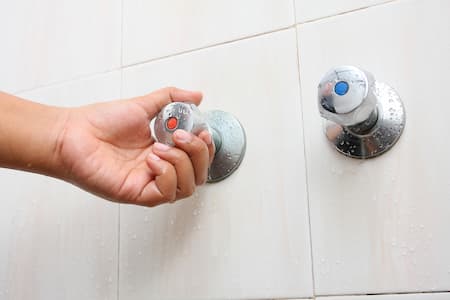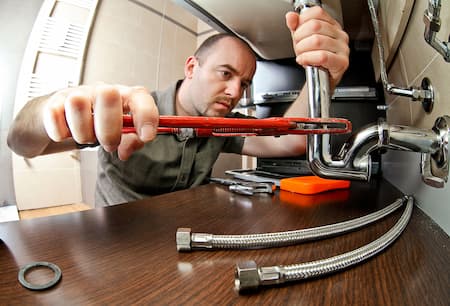What Is The Plumbing Under Bathroom Sink Called In Stockton?
Introduction
When you walk into your bathroom and turn on the faucet, have you ever stopped to think about what happens behind the scenes? Most of us take plumbing for granted, but understanding the components under your bathroom sink can save you a lot of hassle down the line. Whether it's a pesky leak, low water pressure, or a complete plumbing failure, knowing the basics can empower you as a homeowner. In this detailed guide, we’ll explore all aspects of bathroom sink plumbing components to help Stockton residents navigate their plumbing needs with confidence.

Plumbing 101: The Essential Components Under Your Bathroom Sink Explained for Stockton Residents
Underneath your bathroom sink lies a complex world of pipes, valves, and fittings working together to ensure that water flows smoothly and waste is carried away efficiently. For Stockton residents looking to understand their plumbing better, let’s dive into these essential components.
1. The Sink Basin
The heart of your bathroom sink is its basin. Made from materials like porcelain, stainless steel, or acrylic, the basin collects water from the faucet and allows it to drain away through the plumbing system.
1.1 Material Choices
- Porcelain: Timeless and elegant but prone to chipping.
- Stainless Steel: Durable and easy to clean but can show water spots.
- Acrylic: Lightweight and versatile but may scratch easily.
2. Faucet Assembly
The faucet is your primary interface with your plumbing system. It controls both hot and cold water flow through different mechanisms.
2.1 Types of Faucets
- Single-Handle Faucets: Allows you to control temperature with one lever.
- Double-Handle Faucets: Offers separate hot and cold handles for precise control.
- Touchless Faucets: Operated by sensors for convenience.
3. Drain Assembly
Once you've finished washing your hands or brushing your teeth, the water needs somewhere to go—this is where the drain assembly comes in.
3.1 Main Components of Drain Assembly
- Pop-Up Drain: A mechanism that allows you to block or allow water flow using a lever.
- P-Trap: A curved pipe that holds water and prevents sewer gases from entering your home.
4. Water Supply Lines
These lines carry fresh water from your home's supply directly to the faucet while also connecting it to the shut-off valves.
4.1 Materials Used in Supply Lines
- Copper Piping: Durable but can be expensive.
- PVC Piping: Cost-effective and lightweight but not suitable for hot water.
5. Shut-Off Valves
Shut-off valves are critical components that allow you to stop the flow of water when necessary—be it for repairs or emergencies.
5.1 Types of Shut-Off Valves
- Compression Valves: Commonly used in residential settings; they require a quarter turn to stop flow.
- Ball Valves: More durable; they offer quick shut-off with minimal effort.
6. Overflow Drainage System
This component prevents spills by allowing excess water to drain away if the sink fills up too high.
6.1 Importance of Overflow Drains
An overflow drain is crucial because it protects against potential flooding in case you accidentally leave the faucet running or forget about it while brushing your teeth!
7. Venting Systems
Proper venting allows air into the plumbing system so that drains can function effectively without creating negative pressure that could lead to clogs or slow drainage issues.
7.1 Functionality of Vents
Venting systems prevent siphoning effects that could potentially create drainage problems over time—think of them as breathing tubes for your plumbing!
8. Common Problems Under Your Bathroom Sink
Even with all these parts working together seamlessly, things can go awry! Some common issues include leaks at joints, clogged drains, or low water pressure—all situations where calling bathroom sink plumbers might come in handy!
FAQs
1. What should I do if my bathroom sink is leaking?
If you're noticing leaks under your sink, first check all connections for tightness. If there's still an issue, it may be time to call in professional bathroom sink plumbers who can diagnose more complicated problems.
2. How often should I check my plumbing under the sink?
It’s wise to inspect your plumbing every six months or so—look for signs of wear such as corrosion on pipes or drips around connections.
3. Can I replace my faucet myself?
Absolutely! Many homeowners opt for DIY projects when replacing faucets; just make sure you follow instructions carefully and know how to shut off your water supply beforehand!

4. What causes slow drainage?
Slow drainage can often be attributed to clogs caused by soap scum buildup or hair accumulation in drains—regular maintenance can significantly reduce this problem!
5. Is it okay to use chemical drain cleaners?
While they might seem convenient, chemical drain cleaners can damage pipes over time; consider using a plunger first or consult with bathroom sink plumbers if needed.
6. How do I prevent future clogs?
Using strainers in sinks helps catch debris before it enters pipes; regular cleaning will keep things flowing smoothly!
Conclusion
Understanding what's happening beneath your bathroom sink isn't just about curiosity—it’s about empowerment! With knowledge comes power (and peace of mind). By familiarizing yourself with essential components like supply lines, drains, faucets, and venting systems, you're well-equipped for any potential hiccups along the way! Remember—you don’t have to tackle every issue alone; local bathroom sink plumbers are always ready to share their expertise!
So next time you're washing up at home—or even dealing with an unexpected leak—keep these insights in mind! It’ll not only save you time but also equip you with enough knowledge so that those pesky repair reliable plumbing services Stockton calls become far less frequent!